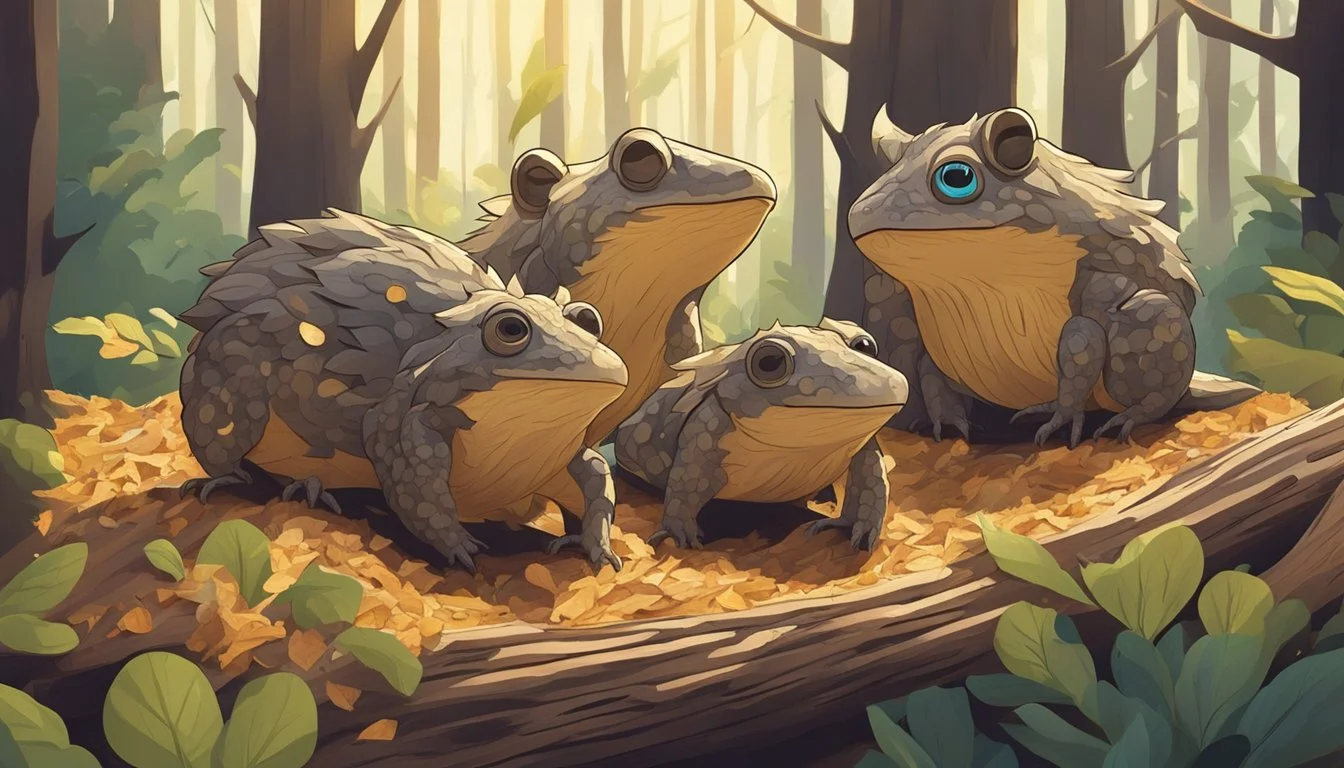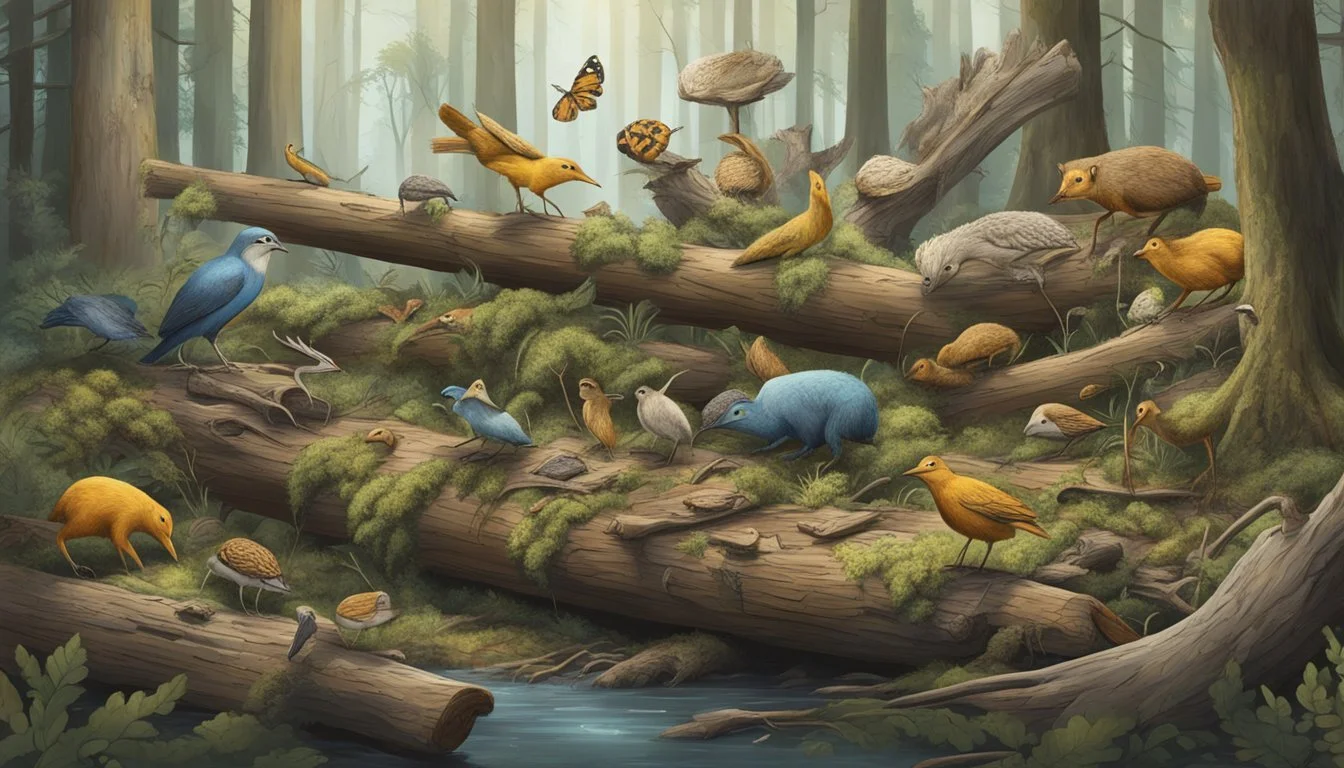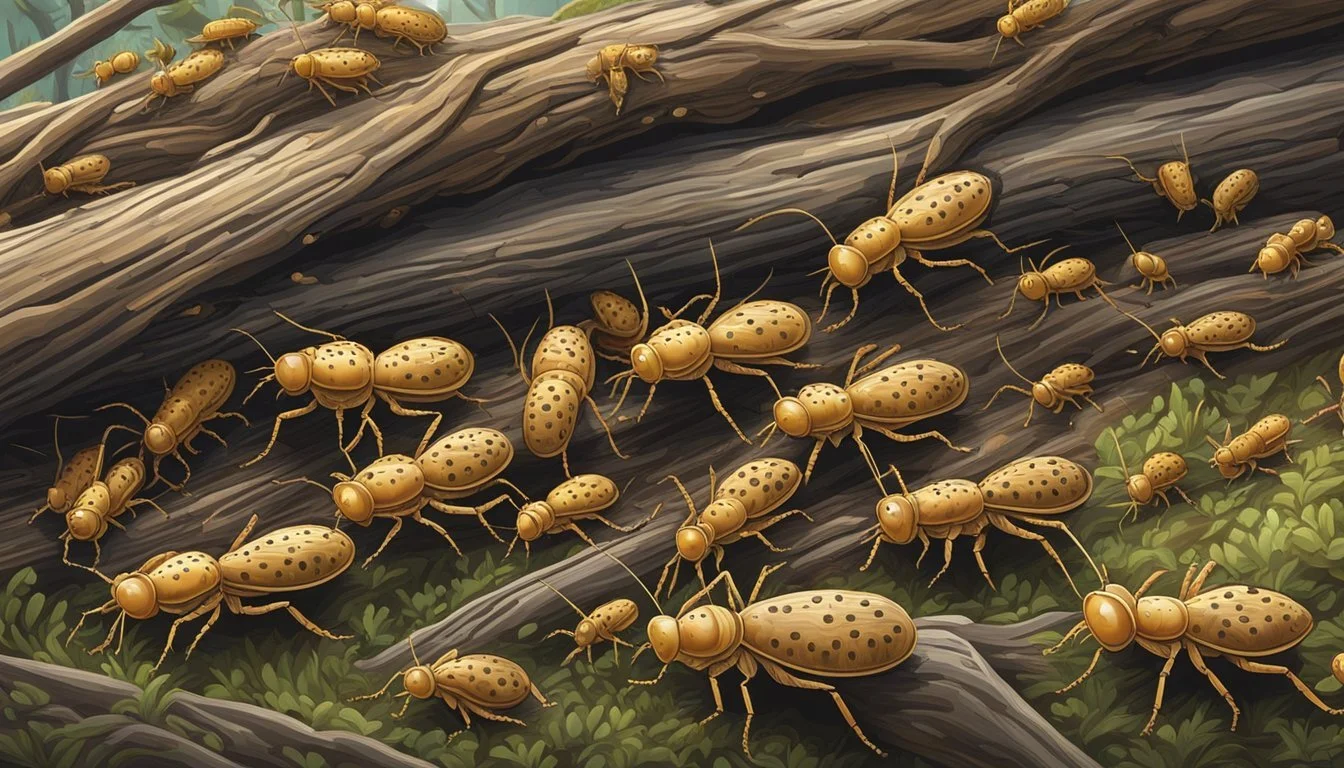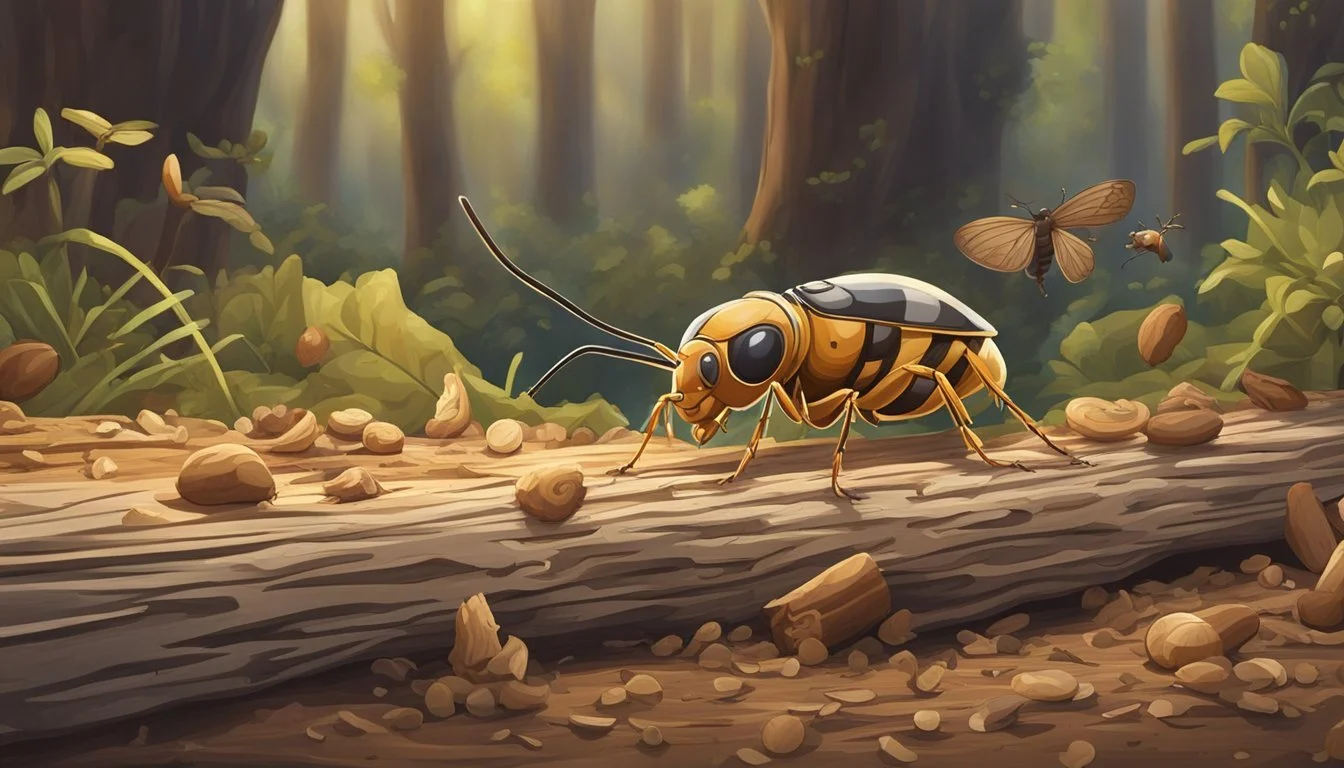Xylophagous Delights
Exploring Gastronomy with Wood-Eating Species
In the natural world, xylophagous creatures are those that have adapted to survive by consuming wood as a primary food source. This unique dietary habit is found in a range of organisms, including insects such as termites and certain beetles, and extends to some species of birds and fungi. The ecological role of these wood-eating species is significant – they contribute to the breakdown of woody material, facilitating nutrient cycling and decomposition within their ecosystems. Their ability to digest cellulose-rich material is facilitated by specialized enzymes or, in some cases, symbiotic relationships with microorganisms.
The consumption of wood-eating creatures is less about the taste of wood itself and more about the nutritional benefits these organisms provide. Many xylophagous species, especially insects, are rich in proteins and lipids, making them a sought-after resource for both humans and animals. Understanding the diet of xylophagous organisms and the implications of their nutritional profile has opened up discussions about the potential of these species in sustainable food production and ecological management.
While the idea of eating creatures that feed on wood might seem unorthodox to many, it is not uncommon in various cultures around the globe. The culinary use of these organisms spans traditional dishes where insects are a staple to new ventures in the search for alternative protein sources. However, beyond their nutritive value, xylophagous species are an essential part of the biological tapestry, influencing the health of forests and the survival of other species. The study of these creatures offers valuable insights into the complexities of food webs and the astonishing adaptability of life.
Ecological Importance of Xylophagous Species
Xylophagous organisms serve as crucial cogs in the machinery of various ecosystems, impacting decomposition processes and contributing to biodiversity through their specialized roles.
The Role in Ecosystems
Xylophagous species, which include insects like beetles that feed on wood, are an integral part of forest ecosystems. They help in breaking down dead or decaying trees, a process that frees up space for new plant growth. This group of organisms is particularly diverse in tropical and subtropical regions, where they are essential in maintaining the ecological balance by controlling the density of wood materials in forests.
Impact on Decomposition and Nutrient Cycling
Decomposition is a fundamental ecological function in which xylophagous species play a vital role. By boring into and consuming wood, they assist in the decay process, which leads to the recycling of nutrients back into the soil. The actions of these species ensure that essential elements like carbon and nitrogen are returned to the earth, thus fostering the growth of new vegetation and promoting a healthy nutrient cycle within the ecosystem.
Biodiversity and Xylophagous Organisms
The diversity of xylophagous organisms contributes significantly to the overall biodiversity in ecosystems. Their presence reflects the health of the ecological network, as they often serve as bioindicators for environmental quality. Moreover, by existing in a variety of niches and participating in different stages of wood decomposition, xylophagous species enhance species richness, influencing ecological stability and resilience against disturbances.
Anatomical and Physiological Adaptations
Xylophagous creatures feature remarkable adaptations enabling them to extract nutrients from wood. These adaptations encompass specialized digestive systems capable of breaking down tough plant matter, enzymes that decompose cellulose and lignin, and symbiotic relationships with microorganisms that facilitate digestion.
Specialized Digestive Systems
Xylophagous insects have developed digestive systems uniquely suited to process wood. For example, the gut of these insects can be elongated and compartmentalized, allowing enough time for the tough woody materials to be broken down. Specialization of the gut's morphology aids in retaining nutritive material while expelling indigestibles.
Enzymatic Breakdown of Woody Materials
Critical to wood digestion are specific enzymes that target the polysaccharides cellulose and hemicellulose, as well as the complex polymer lignin. These insects either produce cellulases and lignases themselves or rely heavily on gut microbes to supply these enzymes. By breaking down cellulose into glucose, xylophagous insects can access a source of energy from what is otherwise a challenging and nutrient-poor diet.
Symbiotic Relationships with Microorganisms
Symbiotic associations with microbes are integral for the nutritional ecology of wood-eating insects. These bacteria and other gut microorganisms are essential for effective digestion as they supplement the host with additional enzymes required to break down plant cell walls. This symbiotic relationship leads to a mutual benefit: microbes receive a habitat and nutrients, while the host gains enhanced digestive capabilities.
Diversity of Wood-Eating Creatures
The ecosystem is teeming with a variety of organisms that specialize in consuming wood, from tiny insects to larger vertebrates. These creatures have adapted unique mechanisms to digest woody fibers, playing critical roles in their respective habitats.
Insects and Arthropods
Beetles: The wood-boring beetles, including the bark beetle, are key players in wood degradation. These insects often possess specialized gut fauna that aid in the digestion of cellulose.
Termites: Known for their impressive, coordinated colonies, termites are among the most efficient wood-eaters, and they significantly contribute to wood decomposition worldwide.
List of Arthropods:
Bark beetles
Wood-boring beetles
Inquilines (organisms that live in the living spaces of others)
Crustaceans: Although less known, certain crustaceans like the gribble and certain species of squat lobster have a diet that includes wood, utilizing unique enzymes to break down tough cellulose.
Vertebrates and Mammals
Beavers: As herbivorous mammals, beavers are perhaps the most well-known wood-eaters, using their powerful teeth to fell trees and consume the cambium layer for nutrients.
Fish: Certain species of catfish, such as the Panaque, have developed the ability to ingest wood, which assists in their digestive process as a source of fiber.
Vertebrates Profile:
Beavers: consume wood primarily for construction and secondarily for nutrition.
Aquatic Organisms Feeding on Wood
Gribble: These small, marine crustaceans are among the few aquatic species that have a diet consisting of wood, vital for the breakdown of timber in marine ecosystems.
Mollusks: Some mollusks are specialized wood-eaters, with unique digestive systems that enable them to thrive on a diet that primarily includes sunken wood.
Species: Gribble, Habitat: Marine environments, Role in Ecosystem: Decompose wood debris
Species: Wood-eating catfish, Habitat: Freshwater systems, Role in Ecosystem: Consume submerged wood
By illuminating the multifaceted roles of wood-eating creatures, we gain insight into the complexity and importance of these organisms within the broader ecological framework.
Feeding Behaviors and Dietary Preferences
The complexity of wood as a material dictates the feeding behaviors and dietary preferences of xylophagous organisms, with various species having evolved specialized mechanisms to derive nourishment from this challenging substrate.
The Influence of Wood Composition on Diet
Different wood-eating species exhibit preferences depending on the composition of the wood they consume. The fiber, calcium, carbon, and minerals found in wood play a crucial role in the dietary habits of these organisms. For example:
Calcium-rich wood is often sought after by species that require the mineral for their physiological processes.
Bamboo, high in silica, is the primary food source for species like bamboo beetles, due to their ability to process this hardy fiber.
Herbivorous and Xylophagous Overlap
Xylophagy is a specialized form of herbivory where organisms focus on wood as their primary food source. It can be seen in various insects and arthropods, some of which may also include dead wood in their diet, thereby being classified as sapro-xylophagous or saproxylic. These species are essential in forest ecology, contributing to the decomposition and recycling of nutrients.
Feeding Mechanisms Among Wood-Eating Species
Xylophagous species have feeding mechanisms adapted to handle the rigors of wood digestion. Common adaptations include:
Mandibles that can grind wood into pulp
Specialized gut flora that assist in breaking down tough fibers
Characteristics of these mechanisms are often directly related to the type of wood consumed, with denser woods requiring stronger, more robust feeding behavior.
Wood-Eating Animals and Their Ecosystems
In diverse ecosystems, wood-eating animals contribute to the cycle of decomposition and nutrient redistribution. They transform wooden structures and timber into habitats and food sources for themselves and other organisms.
Terrestrial Habitats
Terrestrial ecosystems host a range of wood-eating organisms such as termites, woodlice, and carpenter bees. These creatures play a pivotal role in wood decomposition by breaking down tree bark and fallen logs into smaller particles. Termites are particularly efficient at this process, creating extensive tunnels within the wood, which aids in the overall decomposition process. Woodpeckers often hunt for these insects, pecking at wooden structures to reach them.
Aquatic Habitats
In aquatic systems, wood decomposition is also facilitated by wood-eating organisms, but their methods adapt to submerged environments. Certain aquatic insects and their larvae feed on submerged timber, integrating oxygen and water into the decomposition process, sometimes aided by algae and fungi. This breakdown forms crucial habitats and recycles nutrients within aquatic food webs.
Interaction with Human Habitats
When wood-eating insects, like termites and carpenter bees, come into contact with human habitats, they can cause significant damage to wooden structures. The integrity of timber within buildings is compromised as these insects consume the wood for sustenance, often leading to costly repairs. Effective management of these organisms is essential to protect human-made structures while acknowledging their important ecological roles.
By understanding the habitats and behaviors of wood-eating animals, humans can better manage their interactions with these species, ensuring the balance between ecological health and preservation of human structures.
Conservation and Environmental Impact
The intricate relationship between xylophagous species and their ecosystems necessitates a careful consideration of their conservation and the environmental impact of human activities. These wood-eating creatures play a significant role in nutrient cycling and forest dynamics, making their preservation an ecological priority.
Threats to Xylophagous Populations
Xylophagous organisms face various threats, primarily from habitat destruction and climate change. The loss of forests reduces the available dead wood, essential for their survival and growth. Furthermore, changes in temperature and precipitation patterns can disrupt the delicate balance of these species' habitats, leading to a decline in populations.
Human Activities Affecting Wood-Eaters
Human activities, including deforestation, urbanization, and unsustainable forestry practices, have a direct impact on the availability of resources for xylophagous species. The destruction of wooded areas not only diminishes the nutritional sources for these creatures but also interferes with the complex ecosystem interactions in which they are key players.
Conservation Strategies for Xylophagous Species
To mitigate the impact on xylophagous species, conservationists implement the following strategies:
Creation of protected areas: By designating regions as natural reserves, they ensure habitats remain undisturbed by human interventions.
Sustainable forestry: Adapting logging practices to leave behind dead wood can offer habitats for these species while allowing continued human use of forest resources.
Public education: Increasing awareness of the role xylophagous species play in the ecosystem encourages support for conservation efforts.
Each action strengthens the network of support for these integral organisms and helps sustain the balance of the forests they inhabit.
Taxonomic Classification and Evolution
Understanding the taxonomic classification and evolutionary journey of xylophagous species provides insight into the diversity and adaptation of organisms that consume wood as a primary food source.
Evolutionary History of Wood-Eating Species
The evolutionary history of xylophagous organisms is deeply rooted in the ecological need to exploit abundant woody resources. These species often showcase a range of specialized adaptations that have allowed them to efficiently process and derive nutrients from wood. As a result of these evolutionary pressures, traits such as powerful mandibles, symbiotic digestive relationships with microorganisms, and robust detoxification systems have arisen. Xylophagy as a dietary habit likely evolved independently across various taxa, including insects, birds, and mammals, each branch developing unique mechanisms to thrive on a diet primarily composed of wood.
Taxonomic Specialization in Xylophages
Within the vast taxonomic framework, xylophagous species are scattered across multiple clades:
Insects: A substantial number of insect species have evolved xylophagous habits. Among them, certain beetles, termites, and moth larvae are the most recognized wood-eaters, with taxonomic specialization apparent in the intricate ways these organisms break down and digest wood.
Coleoptera (beetles): Families like Bostrichidae exhibit over 700 species in roughly 100 genera, showcasing immense diversity and specialization.
Isoptera (termites): These organisms are exemplary, utilizing specialized gut flora to decompose cellulose.
Birds: Less commonly, woodpeckers and some passerine birds also display xylophagous tendencies as they forage for insect larvae within wood.
The Greek roots of the word "xylophagous" (ξύλον, meaning "wood," and φαγεῖν, meaning "to eat") capture the essence of these organisms. Taxonomy, the science of classification, employs a hierarchical structure as outlined by Carl Linnaeus, consisting of ranks like kingdom, phylum, class, order, family, genus, and species. This organization helps to delineate the relationships and specialization of different xylophagous creatures within the living world's expansive network.
Practical Applications and Uses
The study and application of wood-eating species extend into fields such as medicine, technology, and culture. These organisms' abilities to digest wood through complex enzymes have catalyzed significant research, impacting various scientific and industrial sectors.
Wood-Eating Species in Medicine and Technology
Wood-eating organisms produce digestive enzymes capable of breaking down cellulose, a primary component of wood which is a challenge to decompose. In biotechnology, these enzymes have potential applications in developing renewable energy sources. The enzymes can be harnessed to convert plant biomass into biofuels, offering a sustainable alternative to fossil fuels.
Additionally, the principles behind these digestive enzymes are contributing to medical research, where they serve as models for drugs that can digest complex sugars and aid in treatments for digestive disorders.
Cultural Significance and Utilization
Historically, communities have used wood-eating organisms, like termites and certain beetles, as food sources. These insects are not only rich in proteins but also represent a part of cultural heritage in various regions.
Educational Aspects: Learning about these creatures offers valuable insights into indigenous knowledge and traditional diets.
Impact on Art: These organisms have inspired artwork and storytelling, reflecting the intertwining of nature and human expression.
Educational Aspects and Research
The study of wood-eating organisms contributes to biology and ecology education, offering a clear example of complex bio-technology systems in nature. In educational settings, they illustrate:
Enzymatic Function: How enzymes work to digest cellulose.
Ecosystem Roles: The impact these species have on forest ecology through the decomposition of wood.
In research, there is ongoing investigation into the genetic encoding of these digestive enzymes, which could lead to breakthroughs in biodegradable materials, reducing the environmental footprint of human activities.
Conclusion
In the exploration of xylophagous creatures and their role in culinary practices, one can appreciate the intricacies of ecological relationships. Xylophagous animals, primarily termites and beetles, transform wood into a source of nourishment, showcasing nature’s efficiency. These organisms are not only fundamental in their ecosystems for nutrient cycling but have also inspired a niche in gastronomy.
Termites, often considered pests, are viewed in a different light in some cultures, where their high protein content is prized. Similarly, certain beetles are delicacies in regions where the natural biodiversity supports their consumption. It is vital to approach this subject with respect to sustainability and ethical considerations, ensuring that any use of xylophagous creatures for food does not disrupt local ecosystems or endanger species populations.
Aspect: Nutrition, Importance: A sustainable source of protein and nutrients for certain communities.
Aspect: Ecology, Importance: Key players in decomposition and nutrient cycling within their habitats.
Aspect: Gastronomy, Importance: They offer a unique culinary experience and inspire innovation.
Aspect: Sustainability, Importance: Consumption must be balanced with conservation efforts.
In summary, they may represent a minor segment in the broader culinary world. However, their impact on ecology and the potential for sustainable food sources merit acknowledgment. Any interaction with these creatures demands careful consideration of ecological balance and must align with responsible environmental stewardship.










